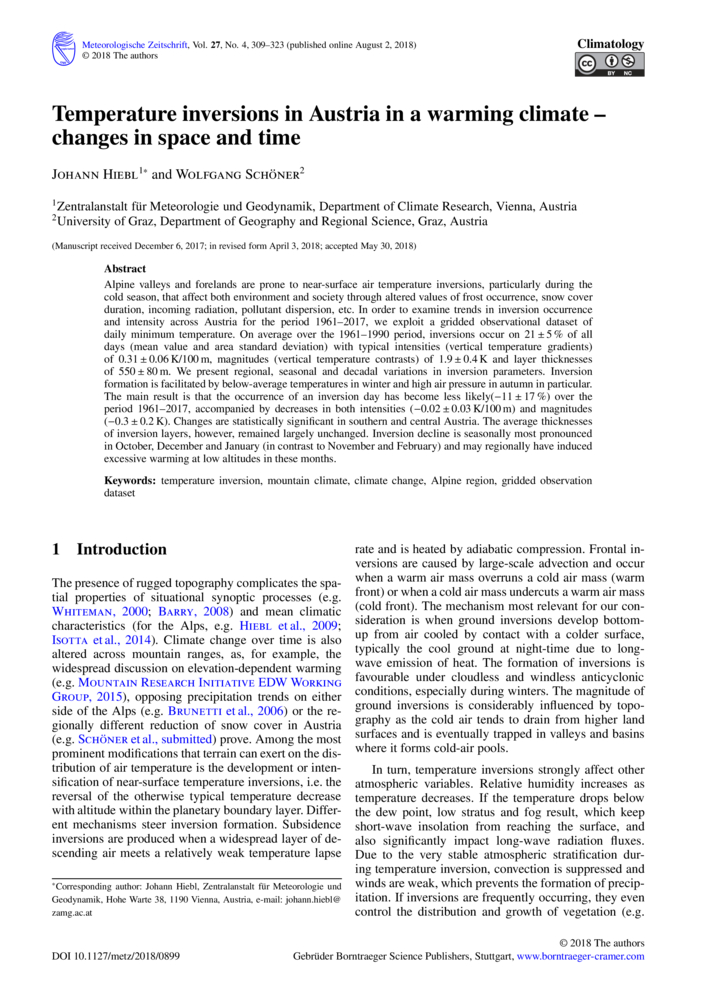Original paper
Temperature inversions in Austria in a warming climate – changes in space and time
Hiebl, Johann; Schöner, Wolfgang

Meteorologische Zeitschrift Vol. 27 No. 4 (2018), p. 309 - 323
41 references
published: Nov 16, 2018
published online: Aug 2, 2018
manuscript accepted: May 30, 2018
manuscript revision received: Apr 3, 2018
manuscript revision requested: Jan 12, 2018
manuscript received: Dec 6, 2017
Open Access (paper may be downloaded free of charge)
Abstract
Alpine valleys and forelands are prone to near-surface air temperature inversions, particularly during the cold season, that affect both environment and society through altered values of frost occurrence, snow cover duration, incoming radiation, pollutant dispersion, etc. In order to examine trends in inversion occurrence and intensity across Austria for the period 1961–2017, we exploit a gridded observational dataset of daily minimum temperature. On average over the 1961–1990 period, inversions occur on 21 ± 5 % of all days (mean value and area standard deviation) with typical intensities (vertical temperature gradients) of 0.31 ± 0.06 K/100 m, magnitudes (vertical temperature contrasts) of 1.9 ± 0.4 K and layer thicknesses of 550 ± 80 m. We present regional, seasonal and decadal variations in inversion parameters. Inversion formation is facilitated by below-average temperatures in winter and high air pressure in autumn in particular. The main result is that the occurrence of an inversion day has become less likely(−11 ± 17 %) over the period 1961–2017, accompanied by decreases in both intensities (−0.02 ± 0.03 K/100 m) and magnitudes (−0.3 ± 0.2 K). Changes are statistically significant in southern and central Austria. The average thicknesses of inversion layers, however, remained largely unchanged. Inversion decline is seasonally most pronounced in October, December and January (in contrast to November and February) and may regionally have induced excessive warming at low altitudes in these months.
Keywords
temperature inversion • mountain climate • climate change • Alpine region • gridded observation dataset